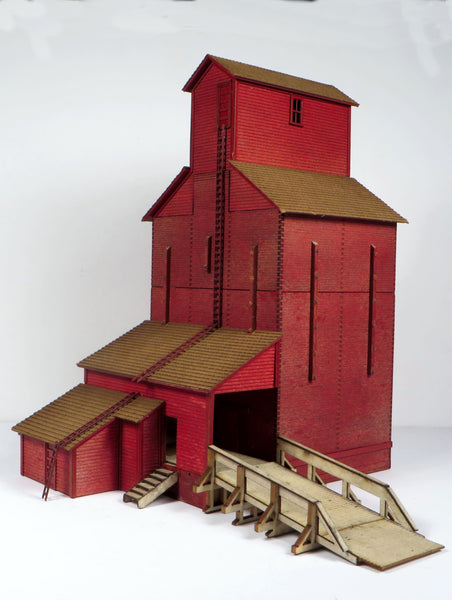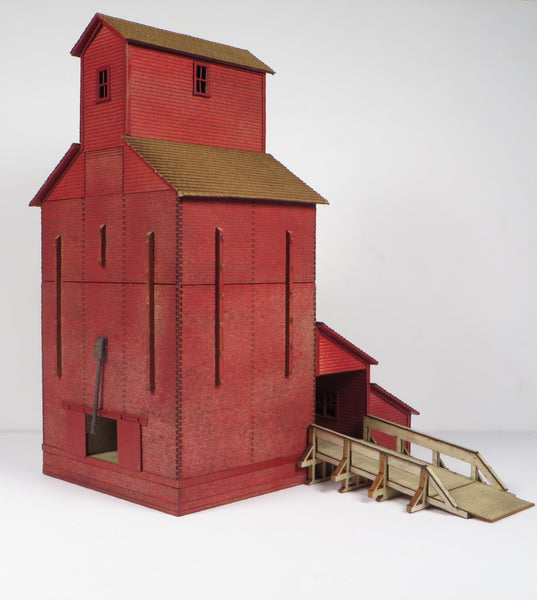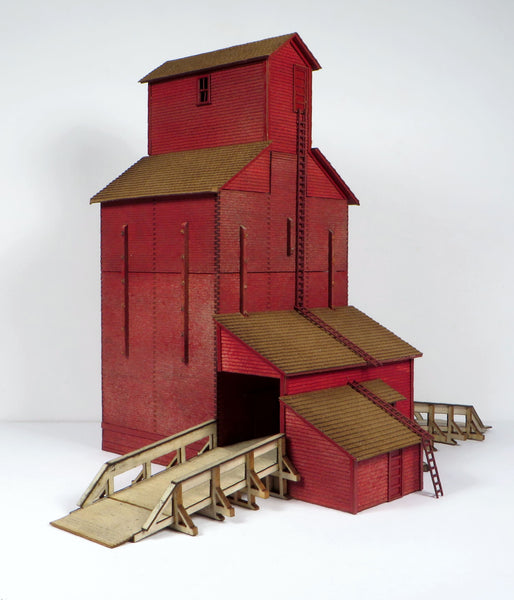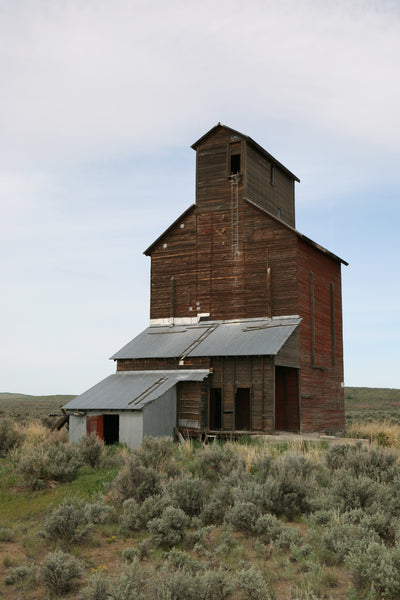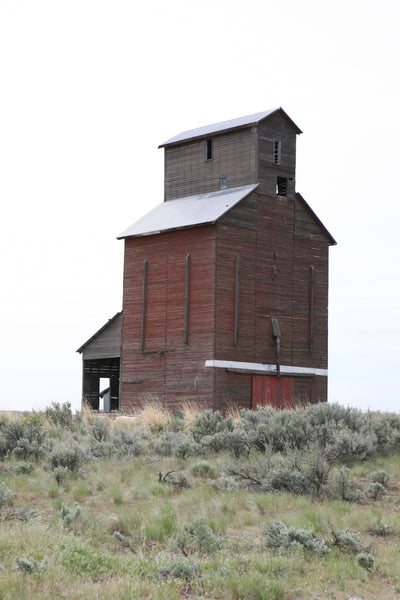Touhey Grain Elevator - HO
This country elevator is small enough to fit any layout and tall enough to dominate other structures in the immediate area. It is an accurate model of the 20,000-bushel elevator built at Touhey, seven miles from the end of the Mansfield branch on the top of Washington’s Columbia Plateau in 1913, four years after the railroad was built. Touhey is a crib style elevator, a design dating to the 1880s. In crib style of construction 2”x8”, 2”x6”, or 2”x4” boards are laid flat with overlapped the joints and are spiked firmly to create external and internal walls.
Our model includes the tall elevator structure, a covered scale and unloading pit under a shed on the side away from the track, with a machinery shed behind the scale and pit.
Dimensions: 12 inches long over ends of ramps, 7 inches deep, 8 3/4 inches tall.
Grain elevators were a crucial infrastructure element of any prairie farming community. Grain, predominately wheat, paid the GN’s bills for decades. Wheat originated from that part of Montana east of the base of the Rocky Mountains eastward along the entire railway and was shipped to Minneapolis for milling, to Duluth/Superior for lake carriage to Buffalo NY for milling, or to Chicago for delivery on futures contracts and sale beyond. Grain from eastern Washington moved west to export elevators on the Lower Columbia River and Puget Sound. Grain from Montana’s “Golden Triangle” and from central Montana moved both eastward and westward. Spot 40-foot boxcars, and their 36-foot predecessors, at the elevator for loading.
Since it was relatively close to the Pacific Coast, grain from Touhey moved to Seattle or Tacoma for export, or to Fisher Flour Mills on Harbor Island in Seattle. When Touhey was built, grain was hauled in boxcars. Nominal 40-foot, 40-ton boxcars with a load limit of 88,000 pounds dominated Great Northern’s fleet in 1913. Since wheat weighs 60 pounds per bushel, these cars could haul 1,467 bushels without being overloaded. In the 1920s the Great Northern began to purchase 40-foot 50-ton steel underframe boxcars. With a load limit of 110,000 pounds, the new cars could transport 1,833 bushels of wheat, an increase of 25% over the 40-ton cars while taking no more track space than the 40-ton cars.
It took only 14 nominal 40-ton cars to haul off the entire capacity of the elevator, assuming only one turnover per year. Country elevator operators make their living on throughput charges, so they tend to ship any grain they buy as soon as possible, which means they turn their capacity several times per year.







